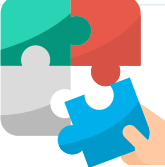IOT Basics
How We define IoT
• Anything connected, anywhere at any time
• IoT Solves problems and transforms data into immediately usable formats
• IoT is just an evolution of managed services

Solving a problem
• Improvements for customer experience (CX)
• Government regulations/mandates
• Monetizing collected data
• Increasing revenues with new business models
• Increase efficiency and productivitya
Why Integrate All IOT
Integrate All enables you to take advantage of the growing IoT/xReality segment through easy routes
to market by creating ecosystems to address specific vertical needs. We solve for any obstacle preventing you
from a successful implementation
Business Development
- Consult
- Opportunity Qualification
- Readiness
- Knowledge Transfer
- Mentor & Educate
Opportunity Enablement
- Assessment
- Architecture & Design
- Quoting
- Finance Options
Service & Delivery
- Multiple shipping
- Deployment
- IoT Marketplace
- Provisioning & Configuration
Defining Our Terms & Examples
IoT solution incorporates four technology pillars, broken down below, that are designed to work together to address a specific use case and deliver a business outcome
Connected Sensor (“things”)
• Synonymous with “endpoints”
• Generates data from environment
• Embedded inside the device, machine or system
• Stand-alone device applied externally to monitor
Gateway
• Aggregates the data
• May possess edge intelligence capabilities for local decision-making capabilities
• Reduction of raw data before transporting to the back end
• Can be routers, modems, controllers, nodes or the
sensors themselves
Connected
• Transmits the data
• Wired and wireless
• Protocols are extensive: Bluetooth, NFC/RFID, Zigbee,
LoRa, Cellular (NB-IoT, Cat-M1, 4G LTE, 5G), MQTT
Platform
• On-premise or cloud-based
• Data transformation, processing, generate insights
• Application: front-end GUI with reporting tools
• User and device management
• Data storage
Three use case examples that delivers a business outcome
• Asset tracking for logistics enables location tracking of cargo—trucks, shipments, pallet loads—in real
time for visibility into in-transit incidents, delays and changes to ETAs, and improved delivery compliance,
reducing costs and improving customer satisfaction.
• Refrigeration monitoring for hospitality, healthcare, or food and beverage provides instant alerts for threats—
trailer temps rising, doors left open, strange cooler activity—to achieve regulatory compliance and reduce
waste, improving profitability.
• Smart street and outdoor lighting for cities and utilities through data visualization of lighting assets, health
monitoring, asset management and fault notifications, reduces costs associated with energy, maintenance
and repairs.
In each case, IoT devices at the edge provide sensor data (raw observations), aggregated by the field gateway, which are transmitted
through connectivity protocols, back to the platform to be cleaned, analyzed and displayed for business users to make decisions.

